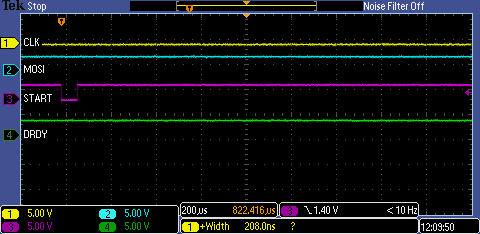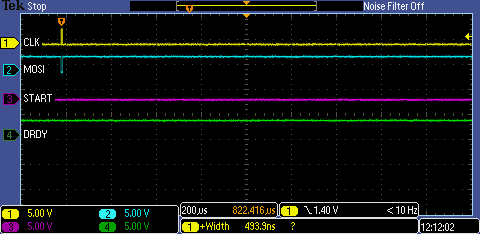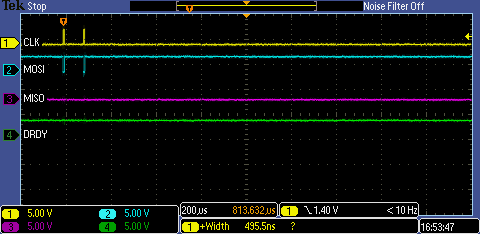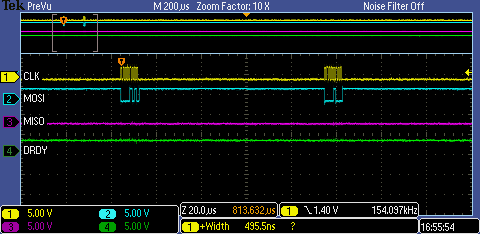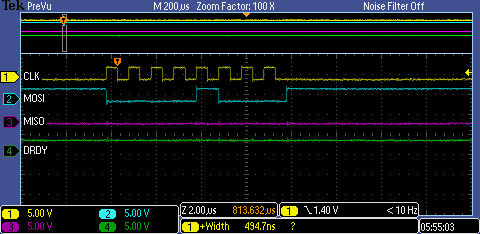Other Parts Discussed in Thread: ADS1292
Hi Team,
Good afternoon, my customer is using the ADS1292R and DRDY isn't asserting in single shot mode (either through the START pin or command). When switching over to continuous mode there is no issues.
Similar to the issues in this post:
Information from the customer:
For reference, here is the ADS1292 register dump after I complete my setup. I am using a 512kHz external clock (CLK_SEL pin = 0). However I have also tried using the internal 512kHz clock with the same results (I prefer using the internal clock if possible).
ADDR:00 01 02 03 04 05 06 07 08 09 0A 0B
DATA:73 86 A0 10 81 60 2C 00 00 00 01 0C
Here is a screenshot showing no DRDY following START toggle. START is low for about 70us. No DRDY for at least 1.5ms.
Here is a screenshot showing no DRDY following a START command for at least 1.5ms.
Thank you and please let me know if you have any questions.
Regards,
~John


